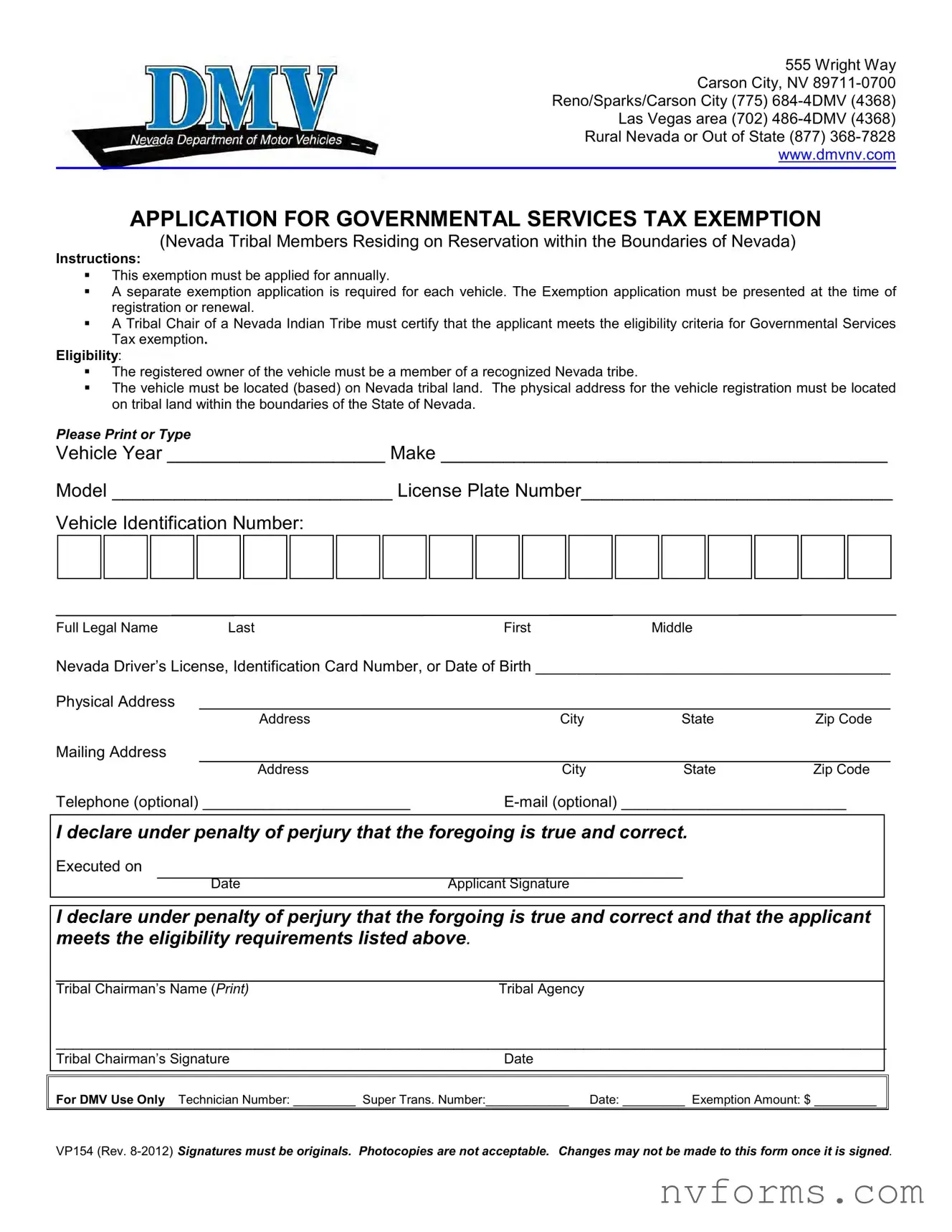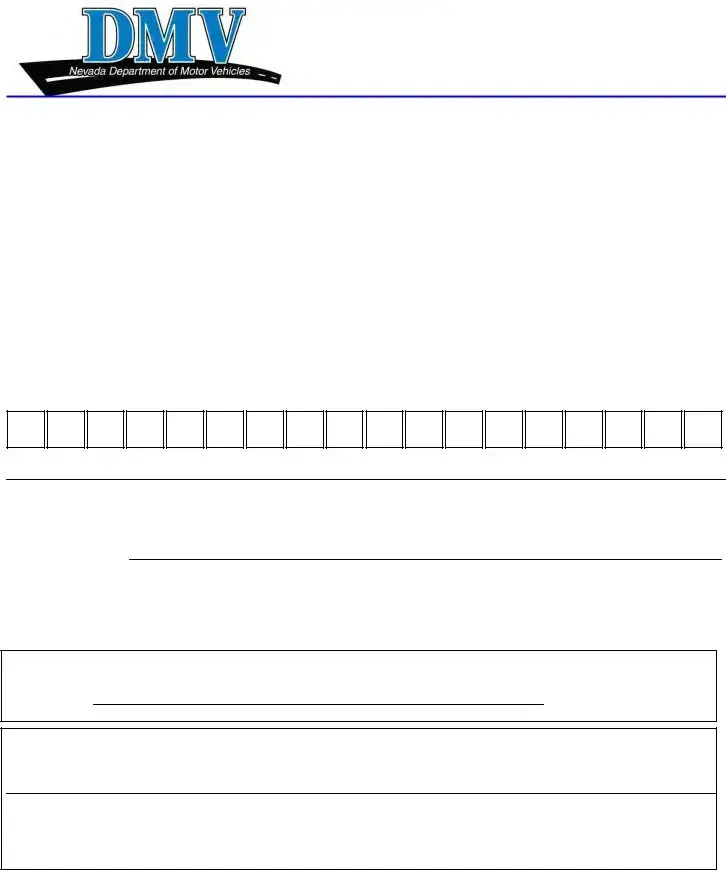555 Wright Way
Carson City, NV 89711-0700
Reno/Sparks/Carson City (775) 684-4DMV (4368)
Las Vegas area (702) 486-4DMV (4368)
Rural Nevada or Out of State (877) 368-7828
www.dmvnv.com
APPLICATION FOR GOVERNMENTAL SERVICES TAX EXEMPTION
(Nevada Tribal Members Residing on Reservation within the Boundaries of Nevada)
Instructions:
This exemption must be applied for annually.
A separate exemption application is required for each vehicle. The Exemption application must be presented at the time of registration or renewal.
A Tribal Chair of a Nevada Indian Tribe must certify that the applicant meets the eligibility criteria for Governmental Services Tax exemption.
Eligibility:
The registered owner of the vehicle must be a member of a recognized Nevada tribe.
The vehicle must be located (based) on Nevada tribal land. The physical address for the vehicle registration must be located on tribal land within the boundaries of the State of Nevada.
Please Print or Type
Vehicle Year _____________________ Make ___________________________________________
Model ___________________________ License Plate Number______________________________
Vehicle Identification Number:
Full Legal Name LastFirstMiddle
Nevada Driver’s License, Identification Card Number, or Date of Birth _________________________________________
Physical Address
AddressCityStateZip Code
Mailing Address
|
Address |
City |
State |
Zip Code |
Telephone (optional) ________________________ |
E-mail (optional) __________________________ |
I declare under penalty of perjury that the foregoing is true and correct.
Executed on
I declare under penalty of perjury that the forgoing is true and correct and that the applicant meets the eligibility requirements listed above.
Tribal Chairman’s Name (PRINT)Tribal Agency
________________________________________________________________________________________________ |
Tribal Chairman’s Signature |
Date |
For DMV Use Only Technician Number: _________ Super Trans. Number:____________ |
Date: _________ Exemption Amount: $ _________ |
VP154 (Rev. 8-2012) Signatures must be originals. Photocopies are not acceptable. Changes may not be made to this form once it is signed.

